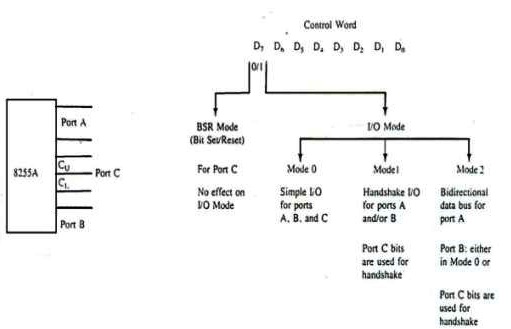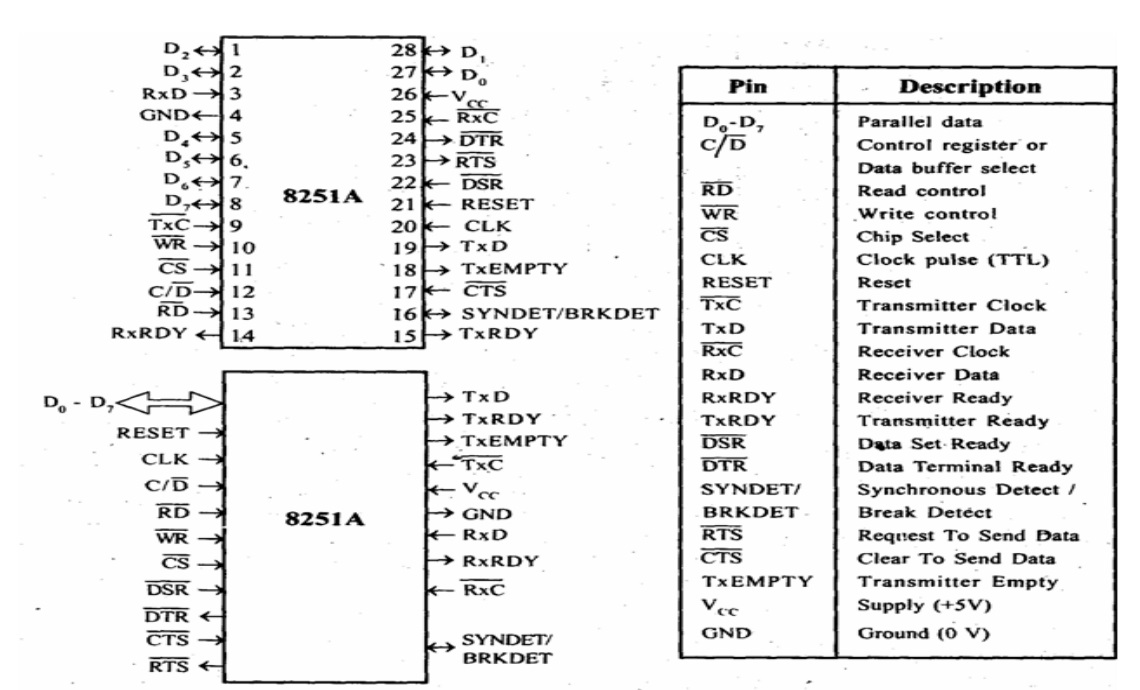8255A - Programmable Peripheral Interface

8255A - Programmable Peripheral Interface The 8255A is a general-purpose programmable I/O device designed to transfer the data from I/O to interrupt I/O under certain conditions as required. It can be used with almost any microprocessor. It consists of three 8-bit bidirectional I/O ports (24 I/O lines) which can be configured as per the requirement. Ports of 8255A 8255A has three ports, i.e., PORT A, PORT B, and PORT C. Port A contains one 8-bit output latch/buffer and one 8-bit input buffer. Port B is similar to PORT A. Port C can be split into two parts, i.e. PORT C lower (PC0-PC3) and PORT C upper (PC7-PC4) by the control word. These three ports are further divided into two groups, i.e. Group A includes PORT A and upper PORT C. Group B includes PORT B and lower PORT C. These two groups can be programmed in three different modes, i.e. the first mode is named as mode 0, the second mode is named as Mode 1 and the third mode is named as Mode 2. Features of 8255 A The promi...
